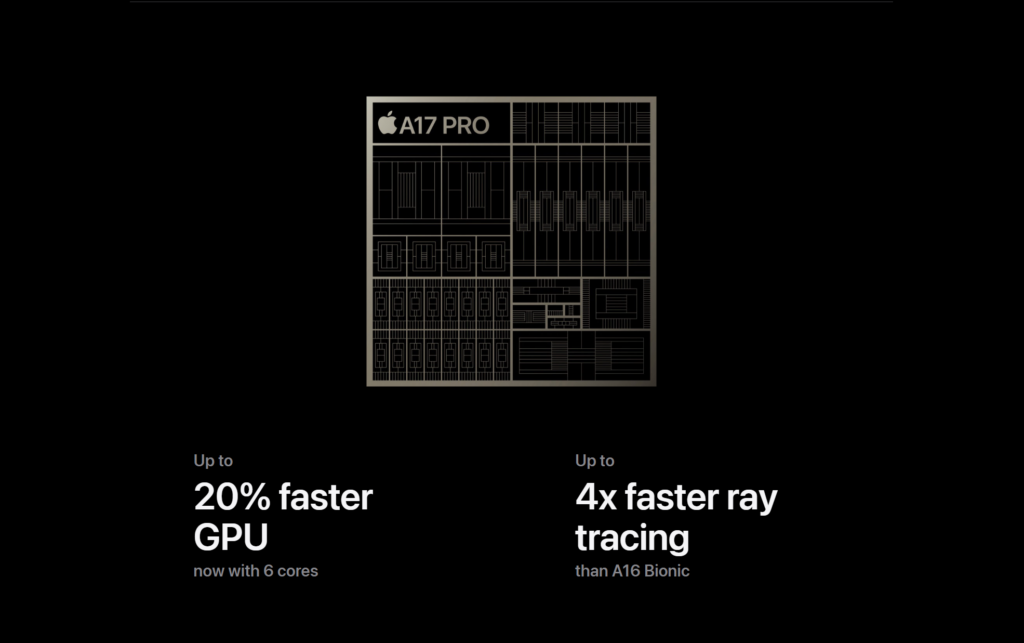Most smartphone makers source their chip from another company, with Qualcomm and MediaTek two of the most popular options. But Apple and Google design their own processors instead, allowing them greater control over new iPhone and Pixel handsets.
The Google Tensor G3 is the latest Google-made chip for Pixel phones, debuting inside the Pixel 8 and Pixel 8 Pro. While the Apple A17 Pro powers the new iPhone 15 Pro and iPhone 15 Pro Max.
It’s great to see both phone makers pushing performance to new heights by launching new processors, but which is the best chip? We’ve dug into the specs to determine the key differences between these processors.
Apple A17 Pro is based on 3nm node
Ever wonder how processors are able to get more powerful each year? There are many factors to consider, but one of key factors is that chip makers are able to reduce the size of the node, allowing them to fit on more transistors. Performance generally improves when you increase the number of transistors on a processor, so there’s an incentive to make the process node as tiny as possible.
Apple has managed to produce a tiny 3nm process node for the Apple A17 Pro, allowing it to squeeze a remarkable 19 billion transistors onto the die.
Google hasn’t confirmed how many transistors are on the Tensor G3 chip, and has even kept quiet on the size of its process node. But many reports indicate that Google is using a 4nm process node. If accurate, that means Google can’t quite match Apple, and this will likely have an impact on performance.
Google Tensor G3 has a 9-core CPU
Google hasn’t offered up any specific details on the core count of the Tensor G3, but a report by Android Authority indicates that Apple has opted for a 9-core layout.
Since Apple uses a 6-core CPU for the A17 Pro, you may assume that Google’s chip has the advantage here, but it’s important to remember that not all cores are made equal. Apple uses 2 high-performance cores running at 3.78 GHz, as well as 4 energy-efficient cores running at 2.11 GHz.
As for Google, the Tensor G3 apparently is made up of one big core (3Ghz), 4x mid cores (2.35Ghz) and 4x little cores (2.15Ghz). As you can see, Google may have more cores, but Apple is able to reach a higher peak frequency speed thanks to the more powerful cores.

Apple A17 Pro is powerful enough for console-grade gaming
When Apple first announced the A17 Pro, it confirmed that it was powerful enough to play games such as Assassin’s Creed Mirage, Resident Evil 4 and Death Stranding. Previously, such games were too taxing for any smartphone, and so could only be played on the go via a connection to the cloud. This illustrates how much power the A17 Pro packs, and how far ahead it is of other smartphone chips.
Google made no mention of console-grade gaming during the launch of the Google Pixel 8, so we expect that it will not be powerful enough to support such games. In fact, the Pixel chips have never been known for high performance, and have often struggled to match the power of the flagship Snapdragon processors, never mind Apple’s.
Google has at least boosted the power of the GPU, with hardware support of ray tracing, but don’t expect to run anything more demanding than a traditional mobile game.
Google Tensor G3 has a greater focus on AI performance
When it comes to processors, it’s clear that Google places a greater emphasis on AI performance than raw performance speeds. This was made very obvious during the launch presentation of the Tensor G3, as Google focused completely on the benefits it would bring to AI.
Google claims the on-device generative AI of Tensor G3 is 150x more complex than the most complex model on Pixel 7. This opens up the possibility for more AI-boosted features, such as automatically blocking spam calls, reducing background noise during a call and removing distracting sound from a video during the editing process.
Google says the AI powers of the Tensor G3 also helps with editing photos, with features such as Best Take allowing you to combine multiple images together to alter the facial expression of a person, as well as Magic Eraser that allows you to easily delete objects or people from an image.
The Apple A17 Pro is seemingly not as advanced as the Tensor G3 when it comes to AI performance, and so lacks a lot of these handy features. If you like the idea of unlocking AI-powered features more than having the best performance speeds possible, then the Pixel 8 could be a worthwhile buy.




